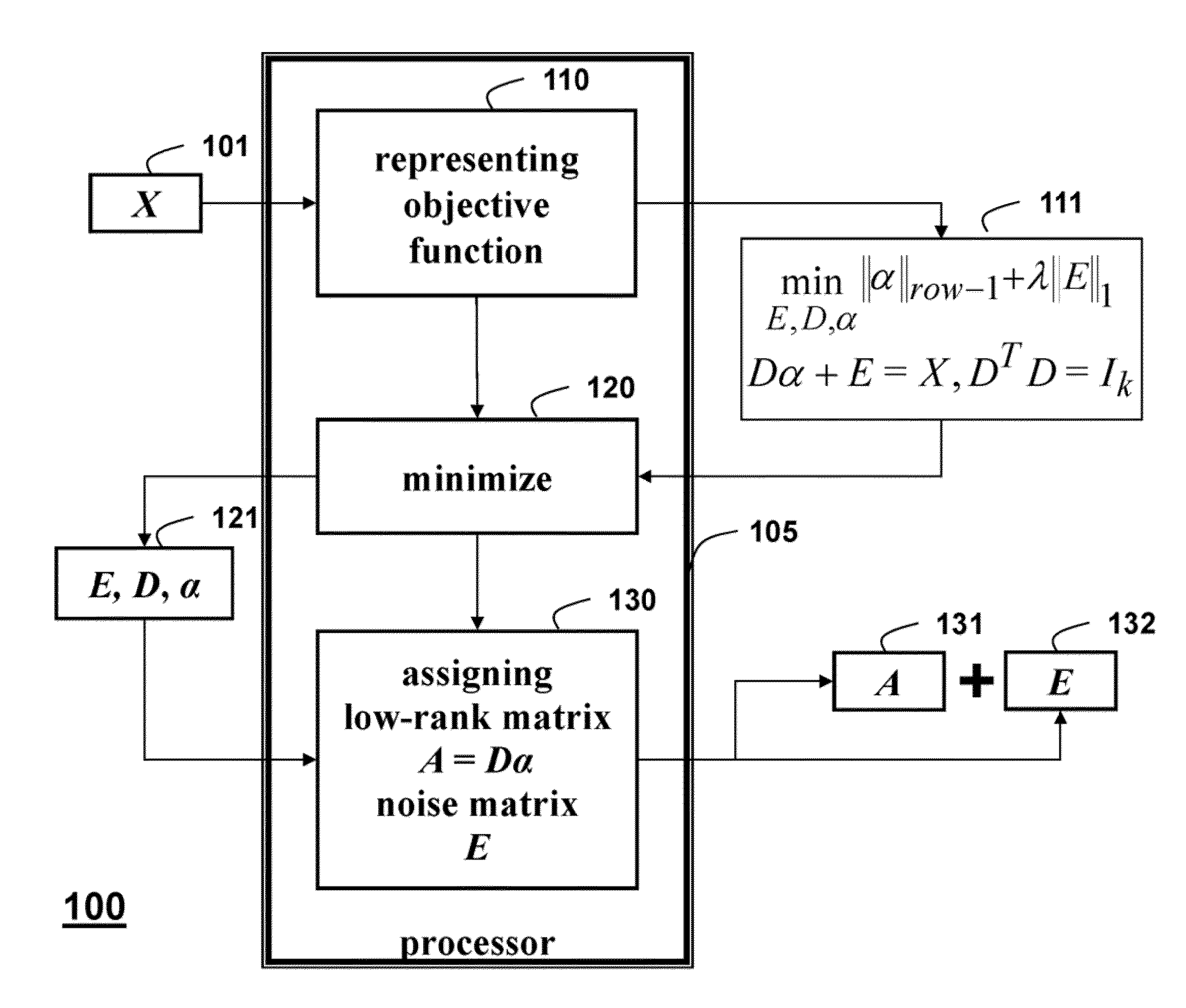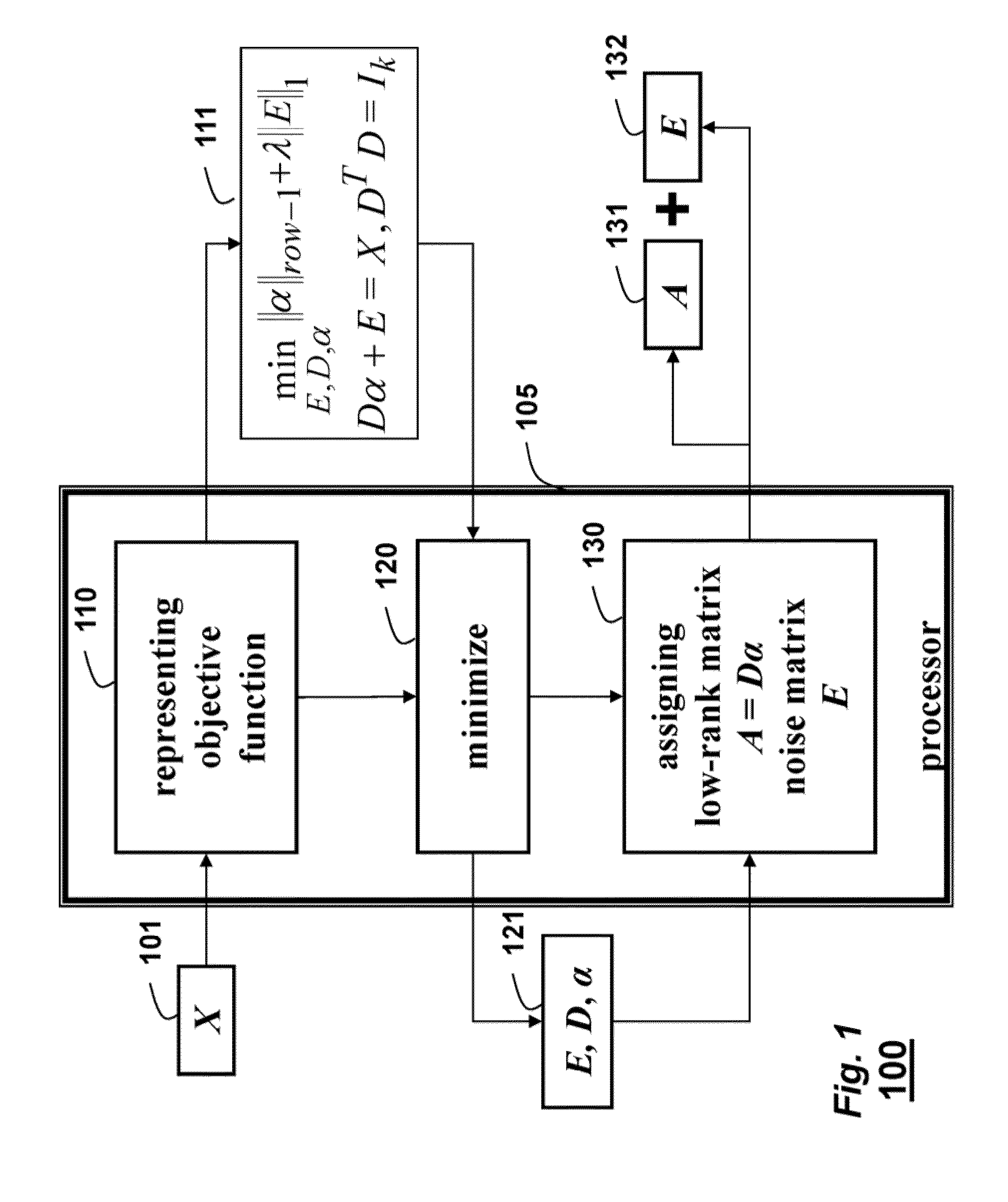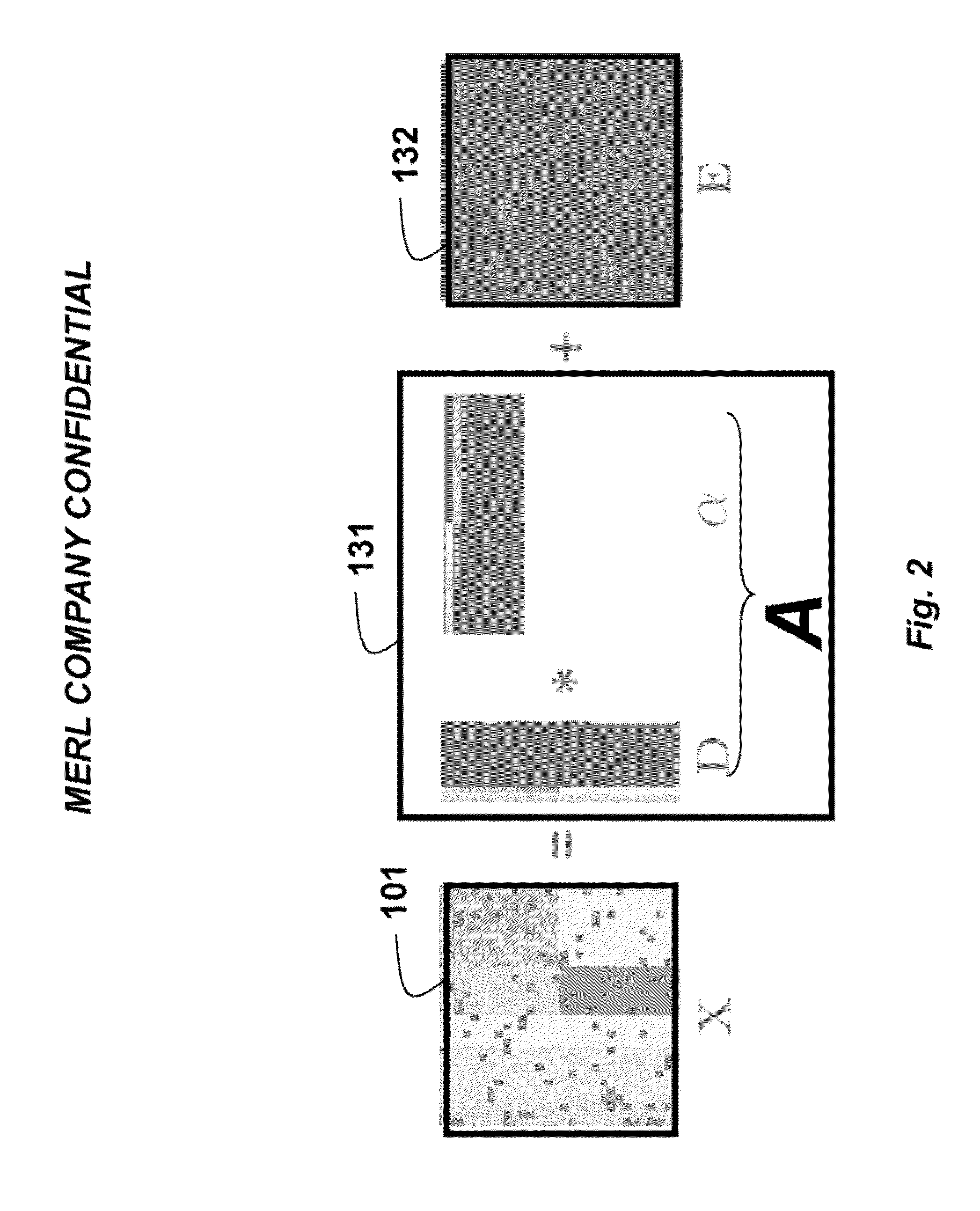Method for Recovering Low-Rank Matrices and Subspaces from Data in High-Dimensional Matrices
a high-dimensional matrix and subspace technology, applied in the field of determiner vision and machine learning, can solve the problems of high computational burden, high computational burden, and easy statistical outliers in the pca, and achieve the effect of reducing the overall computational burden, reducing the computational burden, and increasing the computational burden
- Summary
- Abstract
- Description
- Claims
- Application Information
AI Technical Summary
Benefits of technology
Problems solved by technology
Method used
Image
Examples
Embodiment Construction
Method Overview
[0035]As shown in FIG. 1, the embodiments of our invention provide a method 100 for efficiently recovering a low-rank matrix A 102 and a noise matrix E 103 from data in a form of a high-dimensional matrix X 101. We call our method Structured Robust Subspace Learning (SRSL).
[0036]The high-dimensional matrix is Xεm×n, and the data can be corrupted. A rank r of the matrix A is substantially less than min {m, n}. The matrix A can contain uncorrupted data. The sparse outlier matrix E represents noise.
[0037]An objective function 111 is represented 110 as
minE,D,ααrow-1+λE1,suchthatDα+E=X,DTD=Ik.
[0038]The objective function is minimized 120 to solve for E, D, α121.
[0039]Then, the low-rank matrix A 131 is assigned 130 as A=Dα, and the noise matrix 132 is E. Thus, X=A+E, as shown in FIG. 2
[0040]The structured ordinary subspace D spanned by
D=[D1, D2 . . . , Dk]εm×k.
α are coefficients α=[α1; α2; . . . ; αk]εk×N, and αi specifies a contribution of Di to each column of the matrix A...
PUM
 Login to View More
Login to View More Abstract
Description
Claims
Application Information
 Login to View More
Login to View More - R&D
- Intellectual Property
- Life Sciences
- Materials
- Tech Scout
- Unparalleled Data Quality
- Higher Quality Content
- 60% Fewer Hallucinations
Browse by: Latest US Patents, China's latest patents, Technical Efficacy Thesaurus, Application Domain, Technology Topic, Popular Technical Reports.
© 2025 PatSnap. All rights reserved.Legal|Privacy policy|Modern Slavery Act Transparency Statement|Sitemap|About US| Contact US: help@patsnap.com



